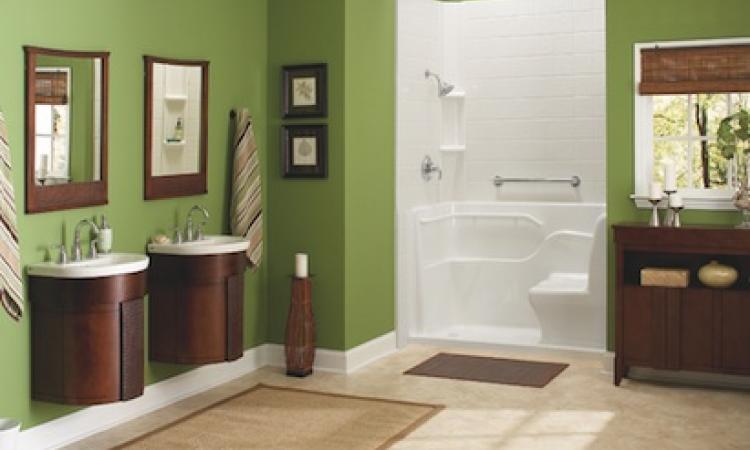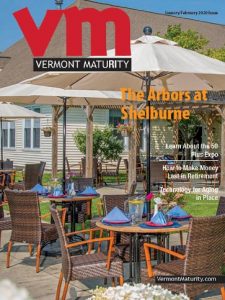
As America’s 76 million baby boomers approach retirement age, their home’s accessibility and ease of use becomes just as important as its aesthetic. New products and smart designs are making it easier for the forever-young generation to improve their homes for convenient use, intuitive functionality and comfort—all while maintaining their own sense of style.
When making aging in place updates to your home, here are some considerations to make:
If you’ve ever cut raw chicken or shaped hamburger patties in your hands, you know how inconvenient it is to turn the knobs or levers to your kitchen sink with messy fingers. Thankfully, manufacturers are introducing touchless kitchen sinks to streamline and simplify cooking and cleaning tasks.
Good lighting is critical, especially in the kitchen and bathroom where insufficient lighting can result in accidents. In these spaces, task lighting is key, whether it’s above the vanity in the master bath or where the majority of food prep takes place in the kitchen. Consider swapping standard toggle switches out for paddle switches—the wider surface area provides a simpler way to turn the lights on and off.
The floor can make a huge difference in both comfort and safety. Slip-resistant surfaces are of utmost importance. If new flooring is a part of your home update, be sure to find out the slip-resistance rating for the surface you’re considering. Keep the following in mind: honed stone provides significantly more traction than polished. And for even more traction, consider a smaller tile size—especially in the bathroom. More grout equals more slip-resistance.
Use color and materials to mark the transition from room to room, inside to outside, to make moving throughout the home safer. A floor with a color similar to carpet in an adjacent room could be a tripping hazard, so reduce risk by using different colors to transition from room to room.
Color contrast is one of the easiest updates to do. Paint a band of contrasting color at the edge of a transition in the floor.
As we age, it becomes more difficult to get in and out of low seating — the toilet is no different. Toilets with a height comparable to standard chairs makes it easier for all of us to sit down or stand up.
Whether your age-in-place update simply includes swapping out your kitchen faucet or embarking on a sizeable renovation, incorporating these smart changes will help you live safely and stylishly in the place you love to call home.
–Info courtesy Kohler Co.
Six Levels of Senior Housing in Vermont
Independent Housing
Private residential units with kitchen and dining areas, bedroom(s), bathroom(s), and living areas; barrier-free with emergency call features, housing management and maintenance services, geared toward independently functioning people. No regular meals, housekeeping, or home health services.
Congregate Housing
Private apartments in a complex that contains central dining and other common areas for those who want or need some supportive services including dining, housekeeping, home health and other assistance.
Assisted Living
Private living units and bathing facilities in a complex; common dining and activity areas; geared toward those who have difficulty functioning independently and who require oversight; provide an array of services, including 24-hour staff, meal plans, transportation services, nursing assessment, care planning/oversight, medication management, organized activities.
Shared Homes
Private bedrooms and either private or shared bathrooms, with common living, dining, and kitchen areas for those wanting a home-like setting; support services such as daily meals, service coordination, and light housekeeping. Residents can bring in hospice care, but these homes are not designed for those with intensive medical needs.
Residential Care Homes (RCHs)
Two categories in Vermont – Level III and Level IV; not required to be barrier-free or to offer private accommodations and baths, although many do. Both levels of licensure provide general supervision, personal care assistance, organized activities and transportation services up to three times per month. Level III RCHs also provide nursing oversight, medication management and 24-hour staffing. Level IV RCHs do not.
Continuing Care Retirement Communities (CCRCs)
Combine independent housing, congregate housing, and assisted living with the availability of nursing home care; require a significant upfront investment, and monthly fees; offer individual residents the benefit of remaining in their community as care-level needs increase.
Compiled by Don Manders with help from Veda Lyon, Manager of the Community Development Unit for the Vermont Department of Disabilities, Aging and Independent Living.
 Related Articles & Free Subscription
Related Articles & Free Subscription
Aging in Place Through Universal Design





Comment here